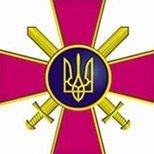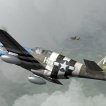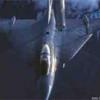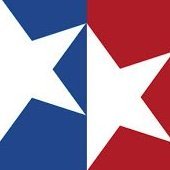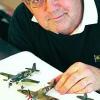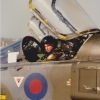Leaderboard
Popular Content
Showing content with the highest reputation on 14/12/19 in all areas
-
So, I started this model back in 2017, lost interest and left it half built. I came back to it a month or two ago, completed the building of the kit and again lost interest. However I managed to finish it a couple of weeks ago now. Had some problems with fit, notably the canopy, the rear side joins near the burner cans and the sparrow missiles. Decals were another problem here and there, particularly on the Phoenix Missiles, for some reason after I had them on the missiles almost all the stencil data decals came off and rolled up on me as I was trying to handle the missiles to apply microset (or is it sol? The red one)! Lost the 2nd vane on the dorsal area also, I was so close to not losing any small parts! I also managed to scratch/damage some of the MRP insignia white paint I put down, during handling, whilst painting (and possibly decalling), I'm calling it weathering/bird strike! There is some oil weathering on it, but you can't really see it in these photos, and it didn't turn out quite as good as on my Airfix 1/72 A-4 Skyhawk (although I fogged the canopy on that one so hey ho). If I were to build this kit again, I'd buy a Master brass pitot for the nose (I had a terrible time with the kit supplied part, it still isn't attached properly or straight!) and try to get the canopy to fit nicely, or fill the gap, before painting commenced... Due to limited space, and my camera not being very good I found it quite awkward to get the photos I wanted and I'm not really sure why, so these are the best I could do at the time... Thank you for looking.29 points
-
Hi Everyone, thought you wouldn`t mind if I shared some pic`s of my latest effort My attempt at a French Indochina Hellcat Built from Eduards 1/48 Weekend Edition kit Finished to represent an aircraft flown by Flottille 12 during the Indochina conflict As usual mostly from the box contents with a few additions................ ......namely rocket rails from the spares box and I noticed that French Hellcats didn`t seem to us the normal centre line fuel tank that US ones did. Luckily I found one that looked right in the stash ( probably off a Hobbycraft Bearcat ) and adapted it to fit. Decals were from Berna Decals set BD 48-24 Hope you enjoy the photo`s, thanks for looking Cheers Russ27 points
-
Hi folks, Finished this one a week or so ago, have been waiting for decent weather to get some outdoor shots, but it's hammered down everyday! I've had to photograph with the lamp so photos aren't great I'm afraid. But wanted to share and will get better photos once the weather improves. Not a bad kit overall, and was quite enjoyable throughout. I usually build gear down and bought aftermarket belts and wheels but fancied something different. The plane is painted with Mr Hobby aqueuous (which I love) and tamiya acrylics. Weathered using the salt technique top and bottom, flory models dark dirt and a touch of oils but not too much. The decals went down really well and there were no issues there at all. The only problem I had was the fact that the instructions don't match the plane in terms of panel lines etc. Bit annoying. The base I made myself. Hope the pictures show the subtle patchiness i was going for on the top. I'd appreciate tips where I can improve. Cheers24 points
-
Here's my Airfix 1/48 Spitfire FR XIVe, completed as a 402 Squadron (RCAF) machine, March, 1945. As I understand it, 402 was one of two Squadron's to operate the "bubbletop" before the end of the war in Europe. I found the Airfix kit to be good, but required careful assembly and a fair amount of shimming. The paints I used are Tamiya acrylic, weathering with Humbrol enamels and pastels, and the decals are a mix of XtraDecal codes, Aviaeology serials, and Barracuda stencils. I'm quite happy with the result, and I hope you like, Colin Link to my accompanying "Highback" build - https://www.britmodeller.com/forums/index.php?/topic/235064455-148-spitfire-f-xive-highback-402-squadron-rcaf-march-1945/21 points
-
S&M Viscount1/144 Aer Lingus decals from classic-airlines.com This is another of my S&M Viscounts with a few mods to re-profile the nose and cockpit 'dome', and thin all trailing edges. I ran out of them so Mike 'Bootneck' kindly sent me this one, thanks Mike!Decals are laser printed from classic-airlines.com, but oddly don't match the reg of the aircraft shown on the side profile that comes with them. No matter though,they went on very well, although I trimmed the lower front edges of the green stripe as it dipped down towards the black radome. I liked the scheme that had the constant lower white stripe so trimmed the excess green off before applying it. This is the advantage of test fitting a photocopy of the cheatline before committing it to water. Also used was 26Decals Viscount detail sheet, but I don't know if this is still available as Ray has stopped doing laser decal sheets. With my previous S&M Viscount, in classic-airlines.com British Midland decals. Thanks for looking John20 points
-
Hello, Here is my Tamiya 1/48 Spitfire mk. Vb "Moonraker" James Rankin RAF 92 Squadron Spitfire mk v w3312 by Reginaldo Reyes, on Flickr Spitfire mk v w3312 by Reginaldo Reyes, on Flickr Spitfire mk v w3312 by Reginaldo Reyes, on Flickr Spitfire 3312 by Reginaldo Reyes, on Flickr Spitfire 3312 by Reginaldo Reyes, on Flickr Spitfire mk v w3312 by Reginaldo Reyes, on Flickr20 points
-
Hi all, here my latest build: Eduard`s Bf 109 G-10 in 1:48. Built it OOB with included JG 51 markings. Only the pitot is by Brassin.19 points
-
Another Mosquito from me, this time in the form of a B.XX. The build thread for both is here: Family shot: Sean18 points
-
Just recently got back into the hobby Here is my Academy 1/72 F-15E Strike Eagle F-15E Strike Eagle 1/72 RAF Lakenheath by Reginaldo Reyes, on Flickr F-15E Strike Eagle 1/72 RAF Lakenheath by Reginaldo Reyes, on Flickr F-15E Strike Eagle 1/72 RAF Lakenheath by Reginaldo Reyes, on Flickr18 points
-
And now for something completely different…. Let me introduce you to what may, or may not be a Robey Road Steamer. To be honest, I'm not 100% sure myself. It's 1/48 and completely scratch-built (other than the driver who was originally a WWII tropical pilot). A 'Road Steamer' is a class of vehicle that I wasn't previously aware of. They were a development of the very early Traction Engines - pretty much, the first trucks. This one is loosely based on the original Robey Steamer which first trundled the British roads in 1870. Its main innovation was the solid rubber blocks on the wheels which meant it didn't damage road surfaces and gave it much more traction than other competing steamers, allowing it to pull up to 30 tons. I'll start by lining up my pathetic excuses. Get ready…. This may not be the most historically accurate model in the history of the universe, I scoured t'internet and only found about a dozen or so pictures of the vehicle in question, and ALL of them are different. We aren't talking minor differences, they all show major variations. Part of the reason for the differences is probably because this is long before mass production. Each of these vehicles was individually made, possibly for a specific job. Their working life may have been measured in decades, so they could possibly have been altered at some point. Another possible reason for some of the variation could be due to artistic licence, as most of the reference pics are engravings. I believe this is the first model ever attempted of it – I wonder why? as a result, I'm going to have to bill this one as 'In the flavour of….'. The alternative would be to suggest that this is entirely accurate to the last detail – but only in the reality that I alone inhabit (Gorbyopolis – where the sky isn't so high, the rabbits smell of purple and not a lot makes sense – but quite nice really (if you ignore the marauding swarms of brackets)). So if you see something and think "That doesn't look like the original picture", you'll have to accept that I've seen that element in a different picture. Honest – would I lie to you? (under no circumstances should you attempt to answer that with any degree of honesty!) Anyway, enough excuses, if you've manage to get this far without falling asleep – well done! The original engraving that started the trouble (Don't forget, I'm not going for a straight copy of the original engraving. For example, the steering wheel size has been taken from three other illustrations.): No teddy bears were harmed in the making of the steam (sorry, that's a lie). Coal shovel, or as I like to call it “the fuel injection system”. Plenty of bone-mangling action. Elf and safely wasn't really a thing in 1870. Thanks for having a look and if you've any interest in the build report (warning: there is weirdness):17 points
-
You'll be getting pretty sick of drawings by now so last post involving them I promise. To reassure myself as much as anything else about being on the right track for a viably accurate outline, I did up a colour composite of the overhead views from the WP publication, GA drawing from the FAW.2 manual, and my own drawing extracted from Richard's drone shot: You'd expect those disparities due to perspective in the green outline, and you can see the disagreement between boom length and wing tip shape/angle between the red and blacks. @Pat Cs thread on Vixen booms has been helpful in the former case, not least due to him getting his Dad to go to Yeovilton to measure them. Top man! I'm currently doing up a schematic with all the major dimensions translated into mm for downscaling to 1/72. It also seemed prudent to have a look at the surface detailing to start taking decisions over which of the two kits will have be the 'engines-out' one. Two avoid adding in as much distortion as I could I shot these through a standard lens using a grid overlay on the viewfinder to ensure lines are at 90 degrees to each other across the frame. The Frog one was damned hard to see the surface markings against so I dusted the surfaces with some lavender chalk for contrast: Opposite problem with the High Planes offering: There are some very nice subtle qualities to those surface details here: I need to check of course that they correspond accurately to panels on the actual airframe but it seems pretty clear with all that rather ugly raised detail on its surfaces, the Frog will have all of the top access panels cut away in order to show the Avons as XN708. That's doubly handy as it can have the wingfold too - which the kit gives you the option for - whereas the paint scheme for XJ481 is just too bold and striking with that diagonal b/w slash right across the aircraft to lose that design through folding. I'm tempted just to cut the whole centre section of the Frog one out altogether and install completely scratched-up engine bays for the engines to sit in. I'll look at some m ore photos and 'have a think'... Tony14 points
-
Tails are done! Now that I think about it, the flash shouldn't carry on to the rudder itself, so I'll probably have to fix that: If I were to do this again, I'd add the vertical stabilizers after painting the fin flash, as their fit is good, and they make it very hard to mask the area properly.14 points
-
Dear members, I like to show you my model of the Atlantic C-2A, with the same type of this aircraft history was written. Called Question Mark was a modified Atlantic- Fokkert C-2A transport airplane of the Unitd States Army Air Corps. Commanded by Major A. Spaatz, it was flown for a flight endurance record as part of an experiment with aerial refuelling. The Question Mark established new world records in aviation for sustained flight, refueled flight, sustained flight and distance between January 1 and January 7, 1929, in a non-stop flight of more than 150 hours near Los Angeles, California. (Wikipedia) I build this model as a normal every day workhorse, without the special modifications of the question mark. Here I included a link to my WIP: https://modelbrouwers.nl/phpBB3/viewtopic.php?f=1&t=47732 Well I hope you will enjoy the pictures of this model, With kind greetings, JohnHaa13 points
-
Hello everybody, here you are my latest build... The LATECOERE 298 DE prototype reco version who flight in 1940.This is the Azur special kit with resin part for this version. You can see more détails on my FB page here https://www.facebook.com/pg/aviapassionmaquette/photos/?tab=album&album_id=2195667470725915 I hope you will like it. Thanks Cheers Thierry12 points
-
I didn't expect to finish this one, this side of New Year. It's the hopefully soon to be re-issued 1/48th Javelin. I had bought it when it first came out but put it to one side as it was just too big. Then last year I built a couple of F-102s, an F-101 and an F-106 so what was I scared of? Well the length is fine but it still has an enormous wing span. I normally use the pound coin to show how small my 1/144th stuff is but it seemed appropriate. It went together like a dream and all I added were some belts and a pair of Master pitots. Well worth the money IMHO. I also used a set of markings for a 5 Squadron machine from Xtradecals. Still not sure I'll build another due to the size and anyway there are sooooo many Hunters I want to build. Thanks for looking.12 points
-
Right, as ordered, more progress! Nothing too special though so don't get too excited. A quick coat of light grey to see exactly how bad my scribing is...... First, top arf..... Not too bad, but a little too zealous on this one methinks... nothing that can't be sorted out though! Then the bottom arf.... To be honest that's nowhere near as bad as I was afraid it was! A few "overshoots" of scribing to clean up, and a little more filling needed around the wheel fairings, but otherwise ok. I'm certainly happy with that for a first attempt at scribing. It was something I was not looking forward to, and didn't enjoy doing! Lastly, an array of little bits of plastic which will, in time, become bomb doors. Right, having done my duty for today, I'm off for a pint! See you soon, and thanks for looking in! Ian12 points
-
Another off the bench. This P-51 is in the markings of Lt. Donald F.Jones, 360th. FS. 356th. FG. late 1944. This is a totally OOB build using Tamiya's own decals which I was surprised how well they settled down. I did this at the same time I did an Airfix one so as to do a comparison. To be honest the Tamiya build was a nicer experience. Any way enough of me going on..... on to the pic's. Please feel free to comment etc Thanks for looking Dick Oh... I got the landing gear doors the right way around this time.10 points
-
Berms? Did you say 'Berms'? Same with me and @limeypilots Battle, though the confounded blighter has cruelly ceased production just when I was getting confident that there was enough to blatantly copy take up in homage. I'd agree thirdly with you both (albeit on the basis of knowledge far scanter than you to savants) John. A good question about the fidelity of drawings and where the impetus for some to be right and others to be merely indicative. Is it possible some of the more sparse GA jobs might have been given to the apprentice to cut their teeth on, whilst the Lords of the Drawing Board did all the detailed breakdowns? Who knows, but each office tends to develop its own particular customs and culture I guess. 'Tis, and it shall be! Ooof! The language on here sometimes is positively martial. Definitely: - a poem of wind and physics - a bird of salt sea and sky - the apotheosis of naval aviation It better no be catching... No checking forum posts while on the slopes d'you hear! This thread'll be all the richer for your presence Bill. A Vixen? As a painted Jezebel? By God sir you have some nerve. That 'Harrumph' was clearly audible this side of the Irish Sea... Page 4 and still nothing built Giorgio. Typical eh? You don't sound sorry to be quite honest Keith. Far from it in fact. I'm detecting insouciance - if not outright nonchalance. 😜 Another little step this evening that has given me greater confidence in the usablity of the Warpaint drawings for establishing the general outline and proportions of the aircraft. James most kindly forwarded me some drone shots taken by a colleague of his that included an overhead of the FAW.1 at Flixton: Image credit: Richard Flagg I'm most grateful to Richard for sharing these through James, yet another reminder of the generosity of people bound together by a love of aircraft! There are of course certain problems in converting an image like this into an orthographic drawing due to a) linear perspective of the scene, and b) optical distortion caused by a wide angle lens - either separately or superimposed. Nonetheless there was enough detail in the hi-res version of this image for me to pull some useful detail: To try and produce as close as possible to a plan view from the original photo, I drew the port side of the aircraft and then mirrored it below to produce the starboard side. The cockpit and coal-hole were then drawn in place. I forgot to delete the stump of the refuelling probe on the stbd wing of course... Allowing for the distortions of perspective/optics, when superimposed on top of the same Warpaint view, the match between the two is pretty damn good. This means that: 1. this drawing 2. the FAW.2 GA 3. James' side view of XJ481 - all seem to tally with the outlines of the Warpaint drawing; I think I can trust them enough now to base major decisions over shape and proportion upon then. Tony10 points
-
Tony, for what it's worth I'm going to put these drawings up, and I know James will have some reservations as to the veracity of some of the data, but it's there to take as much or as little as you can from it. First up, stations, position in inches, and the main engine bay access panels. There you go Tony, something for you to mull over. John9 points
-
Let us remind ourselves of how good this thing looked in its day, March 1957 de Havilland Sea Vixen FAW.1 XJ474 by James Thomas, on Flickr9 points
-
G'day people, Well as we have an 11 hour head start on our UK based brethren, it seems I will be the first of the gate. The instructions begin with the cockpit naturally enough so of course I began with the wings! Mustangs were designed with a laminar flow wing. This was considered ground breaking at the time as this had not been introduced to a mass produced aircraft type before. The Mustang's wing differed from its contemporaries in that it was a symmetrical wing section, while most fighter aircraft wings had an upper wing surface with greater camber to help generate lift. The advantage of the laminar flow wing is that it has its centre of pressure further aft to delay the onset of boundary layer separation. In English this means that it is a thinner wing which has much lower drag characteristics and is highly efficient aerodynamically speaking. In order to achieve these low drag characteristics, the majority of the wing's (upper and lower) seams were filled and primed during manufacture. The majority of the Mustang kit manufacturers have rendered all these panel lines visible. To correct this I have applied liquid filler along the upper and lower wing seams and gently sanding with plenty of water. The ammunition access hatches, fuel filler ports and a large panel on the underside were not filled so these seams were left alone I between bouts of sanding, I began on preparing the cockpit assembly which cleverly includes the tail wheel well and the air intake/exhaust duct assembly that is sandwiched between the two fuselage halves The seat mounts to a bulkhead part which includes the head armor. The PE interior set includes a thinner replacement however I decided that I would just thin down the kit part for a better scale appearance as this would already be set at the correct angle and also less susceptible to breakage while handling. It also includes very nice head pad detail which would otherwise have to be replaced with PE and plastic card, so again more effort saved. I then assembled the seat and has a nice representation of the seat belts, I was in two minds about removing the included detail. Some PE details were then added to the back of the head armor which although sized to work with the PE head armor part work just as swell with the thinned down kit part I ended up removing them anyway as the lap belts are molded integrally with the overly thick seat side braces which will be replaced with PE items. The radio is a fair representation but the PE replacement item also includes better detail, particularly the sides of the radio box. The radio was carefully separated from the kit radio rack using a razor saw to allow the replacement PE item to be installed. I added some missing details such as the cockpit tank filler pipe and contents gauge, the battery box cover and some cabling. Finally, some PE details were added to the tail wheel well bulkheads. I doubt much of it will be seen as the visibility is very limited one the tail wheel assembly has been installed but it was fun to do. So, that is the state of play at stumps on day one...........9 points
-
The question of tyre colour in WW1 is troublesome. Black pneumatic tyres had been around since 1910 in the USA, courtesy of BF Goodrich adding carbon black to the rubber in addition to the earlier zinc oxide that gave the white-grey colour. Cotton fabric bias-ply reinforcement appeared the same year. Both were significant and enduring innovations in the development of motor vehicles. But it isn't clear whether any European or British tyre companies were using carbon black by 1914 or even by 1918. Period photos suggest from colour contrast that the majority of pneumatic tyres in WW1 were still grey, but that solid tyres were black. Understandable as the carbon black increased the tensile strength 10-12 times, a considerable advantage for solid tyres. However there are some photos which suggest that some black pneumatic tyres were around in Europe, possibly imported from the USA. Making carbon black required oil, which was in short supply and increasing demand - notwithstanding the beneficial effect of increasing tyre life and reducing the number needed overall. But Britain controlled almost half the world's rubber production at the time and the principal rubber trading market was in London so rubber supply was not an issue. We could be more liberal with rubber than with oil. The tread areas did get dirty - obviously - and often appear to have a white-wall effect. Tread patterns had been invented in about 1904 IIRC. The ones most commonly seen on British vehicles in WW1 are the lateral indents at intervals across the width of the tyre and a small-block pattern of squares somewhat like graph paper with blocks about half an inch square and narrow slots between. No one does those in kit form or as after-market: hard to mould in any material. Early in WW1 it was thought that handling was improved by having dissimilar tread patterns on the front wheels. Anecdotally, carbon black was happened-upon through car owners remarking that sooty tyres seemed to last longer. Whitewalls came about accidentally by tyre companies cost-cutting and using carbon black only in the tread section. Then they became fashionable. So is there an answer? Sort of. The colour in the photo above seems about right for the much more common zinc-oxide reinforced pneumatic tyres. Rubber Black would be about right for solid tyres or the much rarer new-fangled carbon-reinforced pneumatic tyres. Germany could get neither rubber nor oil in any quantity after 1914 and ended up running iron tyres. It is highly likely that US-built vehicles would have had black tyres, such as the ICM Ford T ambulance. UK-built Fords most probably still had grey.9 points
-
The pair essentially done. Ignore the boss eyed wally that's climbed into the Firefly turret, I've pinched him from a Jagdtiger as I trial. What I need help with is a base. Basically I'm thinking small random shape just big enough for one. The idea being a dry dirt track with grass, possibly long'ish, either side and short between the ruts and maybe a tree trunk to give a little vertical interest. I've some das clay to create the "ground", contours, depressions etc, do I then paint this an appropriate colour, then acquire some static grass and an applicator and go to town with it? I'm curious to know if I'm barking up the right tree before going and spending money on the above mentioned bits (applicators seem to vary in price from £15-£60 for one thing). If so, any recommendation? Type, colour, length etc of static grass and the best way to apply, (glues etc) the applicator itself... To be honest any suggestions on the best way to achieve the desired objective would be much appreciated. Thanks for taking the time to look in. Darryl8 points
-
Dear all. I'd like to present my recent adventures with the character-full old Airfix kit of 'Faithful Annie'. I made a lot of changes - as you might have anticipated for a kit this old - but belly aside, I was impressed by how accurate Airfix caught the proportions and outline of both fuselage and wings. There was much scratch-building from brass & plastic, which I won't bore you by listing again as the cumulative list of tasks and rationales can be found over here: The aircraft is the one that famously discovered the Knickebein beams being used to guide the Luftwaffe to targets over Britain in 1940 - a list of historical refs. are given over on the build thread. Aside from the Hallicrafters set used to detect the beams and the need to alter the electricity supply of the aircraft in order to power it, any further detail regarding the installation of any different aerials &etc. seems now lost in historical mists. Not surprising given the jeopardy of that period in the war. I was lucky however to be in correspondence with the son of the pilot - Flight Lt. (as he then was) H. E. Bufton - who generously sent me copies of the pages from his father's log book for that night, confirming both the serial number of the aircraft and timings of the flight. Aside from log book entries, I was able to cross reference with a copy of BAT&DU (later 109 Sqn) Operations Record Book (AIR 27/852), obtained from the National Archives. I hope that Hal Bufton's son is pleased at how his father's aircraft has turned out. All camouflage and national marking are painted with Tamiya acrylics: detailed discussion over colour schemes and why there are no squadron codes on the fuselage are contained in the latter part of the WIP so I don't propose repeating these at length again here. Main technical reference for buildings and alterations (aside from contemporary IWM photographs) of the aircraft was the Anson parts & maintenance AP.1525A,D,E&F. A general walkaround first then: Some closer-ins.... The insides had a makeover too: I hope you like the results. It was a lovely kit to be working on and I was blessed - as always - with a kind and knowledgable bunch of companions on the 18 months it took. Tony7 points
-
Thanks Steve. I think a big part of modelling is illusion. Thanks Giorgio. Putting the transfers on is one of my favourite parts of building the model. Even the stencils. It really transforms it. Thanks. Immaculate, eh? I suspect if the Virgin was watching while I was building, she was covering her ears when I was working with those Print Scale decals. Agreed. The photo that I posted of this exact aircraft hardly shows any panel lines at all. I know why washes are so popular, but I think it has be subtle. I'm guilty of some real bad examples! Thanks. Some of the old kits are diamonds in the rough. Often, their shapes are more accurate than modern tooling. And this kit went together quite well - no fit problems, etc. She looks good. Now if I can refine my scribing technique beyond that of the Matchbox Mad Trench Digger, the next one will look better! Thanks Terry. Nothing special here, just Gunze H73 Dark Green and H75 Dark Sea Grey. I didn't modulate the paint at all, as I wanted her to look nice and clean - right out of the paint shop. Now H73 and H74 are Gunze's "WWII" versions of these colours. They also make H330 Dark Green BS381C/641 and H331 Dark Sea Grey BS381C/638 which are supposed to be the "modern" versions of these colours. I don't know if there even was a difference between these time frames, maybe @Jamie @ Sovereign Hobbies does. Anyway, I prefer H73 and H74 and use these for both time frames. H331 in particular is a weird grey with a purple tinge, whereas I think Dark Sea Grey was fairly neutral. (Although e-paint.co.uk shows the RGB equivalent as 104, 108, 113, but I don't know if that extra bit of blue is enough to make it look purple.) Your mileage may vary. **** OK, how about some air brakes? I found some leftover photoetch in the spares box that I decided to use for actuators. I think they were originally intended as straps for some thing. Anyway, they fit nicely, like so: And a view from the top: These aren't strong enough by themselves, as a hinge action is possible, and if I move them too much they could break. Plus, the real thing seems to have a gusset-like support as well, so I used some old True Details 1950s USAF antennae to act as a surrogate (these are the gold-coloured parts in the photos). Then I added the air brakes. I'll take it. Not sure it was worth all the effort, but it adds some interest. I'm tempted to leave the gussets gold - I can make believe they were some fancy alodining or anodising. They look more interesting this way. Or maybe I'll paint them aluminum. Next up will be the canopy seals. I know they were off-white in real life, but I don't have any off-white decal stripes, so mine will be white. But they're old decal stripes, so maybe they won't be bright white. Cheers, Bill7 points
-
Thanks Mutley, much appreciated Quick update, everybody: I completed the stenciling for the underside There are a lot of stencils, as you can see It took a couple of sessions to do the job, now I'm having a bit of a pause before tackling the top side... Comments welcome Ciao7 points
-
Always use Utterly Butterly whereupon no possible smearage of butter can contaminate painty surfaces (Thinks: is this a potential slogan for DairyCrest? Should I write to them offering my offering for a commercially viable fee?) ((I'll stop this here, it has echoes of the voice-over from my favourite tv show Soap))7 points
-
OK, waited until after 10am 0000 UTC to start Started by spraying the insides Airfix call for Humbrol 226, which seemed too green, so went with Model Master, but it wasn't a lot better so added some yellow, a little happier Airfix call for the underside to be white, and the Aerofax reference says basically the same, so painted most of that to save a lot of masking later on I started to put the cockpit together, but the control column broke when I tried to get it off the sprue, is this one of the kits that does that all the time? 😲 bit of a pain, not sure what to do, probably have to scratch a replacement, bugger going to slow me down. I was hoping that this was going to be a bit of a blitz build, bit hard when part of the interior goes off, I did find both parts, but the lower part went pinging off out of the tweezers, never to be seen again when I was trying to fit it.🙄 see what tomorrow will bring7 points
-
Thank-you Alex and I appreciate the kind words. I have not much to show as I've been mostly checking and adjusting seams on the fuselage and wings by priming and sanding. I did, however, attend to some of the details on the tail feathers. First, in order to break up the flatness of the moulded wings, I cut the elevators at the horn balances, scored the hinge line, and gently bent them downward. Below can be seen the one at left done and the one at right yet to be done. This technique saves a lot of work in that the control surfaces need not be entirely separated and reattached but not all details will allow this. know the trim tab should deflect upward as the elevator goes down but I didn't bother as the elevator deflection is pretty small. At the rudder, the underside of the received a torque tube and there's a small plate near the trim tab: These details can be seen on the restored KA114: With that all done, the rudder was glued to the tail. Note that the "starving cow" ribs have been toned down with a couple of coats of primer followed by sanding. Thanks again for looking in, hitting the "likes", and for the comments. Andy7 points
-
Evening all With the Christmas holidays here it's time to get this monster back on the bench... IMG_1693 by Thomas Probert, on Flickr IMG_1694 by Thomas Probert, on Flickr I'm making slow in-roads in scratch-building the flap apertures and associated structures at the moment - more soon hopefully! Tom7 points
-
This is the Battle of Britain Buchon I have made for the Film, Fictional and Speculative GB. This is a model of the Hispano HA-1112 “Buchon” which was used as a stand in for the Bf 109 in the Battle of Britain movie. The plane number “5” is more than likely in the movie, but not featured like the others. However, it is featured in a documentary that uses a lot of shots made for the film. The model is weathered to look as if it had done a lot of flights for the camera. The last photo I took the other day shows it with the real Bf 109 for comparison. It is an old Hobbycraft kit re-issued by Academy. The kit has the usual fit issues and needed some filling here and there. The worst area was the back of the cockpit. The canopy was about half a mill to small on both sides, which is why the canopy area on my model isn’t as good as I would like. I added detail to the wheel wells and drilled out the exhausts and the spinner. There is no aerial because I couldn’t see one in any of the photos taken during the filming. I used the Tamiya weathering master set to do the weathering. I may have over done it a bit on the fuselage joints, but this was an experiment so I’m not concerned about it. The dark green is my own mix because the film planes used a darker green than the normal Bf 109E-3. The decals come from two sources. The Main decals are from a Bf109 set and the badge is from a paint on mask marking set that wasn’t in good order when I got it. All in all it wasn’t a bad build.6 points
-
Its been another ridiculously busy year at work for me, so modelling has been a bit of a sideline. Not my best year, but generally OK. The year started with a couple of 1/76 resin AFVs from Matador, an FV715 Ferret Mk.5 and an FV721 Fox: Then an aircraft that isn't exactly elegant, but interesting nevertheless, the 1/72 Matchbox Vickers Wellesley A bit of a challenge this one, the very crude Leoman 1/72 Sukhoi Su-9. Not really recommended! My old Italeri Chinook received some blade repairs to resolve the wear and tear of travelling to many model shows Then perhaps my favourite build of the year, the Blue Vixen radar trials conversion to an HS125-600, using the Matchbox kit, inkjet decals and some scratch built nose additions! A trip to Disney Paris Star Wars event stimulated a build of the Bandai X-Wing fighter A Fujimi Sea King kit that was missing its canopy received a home-made replacement and turned into an RAF HAR.3 SAR machine Then for the 50th anniversary of its first flight, a naval Westland Sea King HAS.1, fully armed, using the Fujimi kit and some old Modeldecal markings: The anniversary of the first moon landings saw an old Airfix kit built to modern standards: After seeing the Italian Navy Avanti at the RNAS Yeovilton airshow, the A-model kit in my stash moved to the top of the build pile: Then I started off on a bit of a Skyhawk binge, starting out with the Hasegawa kit: Quickly followed by the new Airfix kit in one of its guises: My regular work trips to Holland enthused me to build Revells latest Embraer E190 kit in 26 Decals KLM markings: .... and finally, two late Skyhawks in US Marines service, using the Italeri A-4M and OA4M kits: And thats all fffffolllks! See you next year.6 points
-
Aaah, the sophistication of cafe society. Living out here in the sticks one misses it so Giorgio. The witty repartee, the saliva all over your shoes.... You sir have force me to break my own embargo on any more drawings! Interesting result John: Against the WP drawing wingtip, trailing edge and boom are nigh-on perfect (though boom slender). Leading edge angle speaks for itself. That gives me an excellent candidate shape for the wingtip now so thanks for nudging me into action as this was an outstanding detail now resolved. Aaarrr... I suppose it depends what you used to get up to in them or whether in fact this is a euphemism Ian. Amazing that you ever became a surgeon at all. Tery: hope the latest addition satisfies you palate.6 points
-
And we're off! First thing to do is to get the saw out. Creative destruction - at least that's what I hope. I've taken off the fuel tank and placed a piece of thin plastic card over the resulting hole, to create a new floor for the second seat. I'm recycling an old Airfix Mustang seat from a kit that didn't make it to the finish. But I've shortened the rear of the seat to enable it to fit decently into the back of the cockpit. The second job has been to make the basis of the fin extension from plastic card. I used drawings from the internet as a guide, and it seems to look OK so far in terms of shape. I've also filled the flare chute as I don't see evidence of that in pictures of the real thing. And I suppose I should remove the fuel tank filler too, as I don't think there's any need for that either. Must say I'm quite enjoying this! Justin6 points
-
Its time to get this one somewhere near, modelling time has been in short supply lately ,as it stands atm ,i made a fire extinguisher, A hastily made beer fridge, and some tinnys, a few bottles of what I'm calling craft gin, out of stretched sprue ,(apparently its all the rage lately, no not the sprue ,gin ) a pint under the tap streched sprue again , and a red coloured drink atop the bar,stretched clear sprue, **scale could be off by quite a bit** , you could spend an age detailing the interior , i had a vision i failed, i know its lacking somewhat , if i spend any longer on the interior I'll end up rushing the exterior, still have to do some kind of base 😳 And I've closed it up, the fit isn't even close in places, but was the real van? A practice to see if i would get away with dry brushing the grill,i reckon i can, with a bit of masking, I have got the drivers door fitted too, the passenger side will be open, as well as the door on the side to the serving area, tyres are still to be done, although i do have the resin now, and some new sillicone, so i can mold the rubber tyres (or try to) for a 72nd takom maz 534 kit I'm building aswell, Cheers all 👍 Glynn6 points
-
6 points
-
You could include a fancy artisanal sandwich with every kit! Meals4Modellers, I can see it now. I have my eyes on a higher prize.6 points
-
So December 14 has arrived and everyone has started before me. In the interests of stash reduction I have decided to build two Mustangs, one Tamiya and one Hasegawa, and to build them concurrently. Here they are: and the sprues, Tamiya: and Hasegawa: the general parts breakdown of the two kits, while not exactly interchangeable are almost the same. The Tamiya offering is later and more detailed, especially in the cockpit. I will be building OOTB with maybe an added tweak or two. The Tamiya will be built as Maj. Leonard “Kit” Carson’s Nooky Booky IV, and the Hasegawa as Col John Lander’s Big Beautiful Doll. The parts have been given a good wash and I’ve started on cleaning a few parts up, not that there is much or any flash to remove. With a heat wave in the offing with temps forecast for up to 41C next week and then the Chrissie whirl of social engagements to follow I don’t expect much progress to be made until after Christmas. AW5 points
-
I continue to struggle with motivation and enthusiasm, combined with a lack of workbench time. This has contributed to a below par year for output - only 6 completions so far, though I'm hoping to get another couple of review kits done before year's end. Anyways, here's what I did get done. 1. Airfix 1/48 Mustang IV - 19 Sqn RAF: MustangIV-01 by paulbradley109, on Flickr 2. Italeri 1/48 F-16A - Belgian Air Force: 72286905_915953875447224_4778997379976134656_o by paulbradley109, on Flickr 3. Special Hobby 1/32 Tempest IV - 3 Sqn RAF: 30 by paulbradley109, on Flickr 4. Hasegawa 1/48 Spitfire VIII - 152 Sqn RAF: 007 by paulbradley109, on Flickr 5. Italeri 1/48 OH-58D - Croatian Air Force: 005 (2) by paulbradley109, on Flickr 6. Hasegawa 1/48 P-47D - 146 Sqn RAF 001 by paulbradley109, on Flickr I've signed up for a bunch of group builds in 2020 in the hope that I can kindle some enthusiasm - there are some of my 'Top 100 Kits That I Really Want to Build' in there, so I'm hoping this will be the year I can really get back into modelling!5 points
-
Pretty standard I know but I wanted one for the shelf. Tamiya XF83 Medium Sea Grey 2 is the base colour, finished with Tamiya panel liner, AK streaking grime, oils and water colour pencils, the feet were weathered with track wash and AK european earth. The crew we reposed using Tamiyas 1:48 panzer grenadiers figure set5 points
-
Morning folks, a year spent mainly in 1/72 scale and a shedload of older offering's especially in the Frog GB. so working backwards from the most recent,Airfix Skyraider, Airfix F-86D. Airfix Thunderstreak. Airfix Lightnings. Airfix Provosts. The Frogs Legacy.5 points
-
F-4Ds of the 465th Tac Fighter Squadron, 507th Tac Fighter Group, Air Force Reserve out of Tinker AFB. Nellis AFB, June 1983 66-7608 66-7701 66-7704 66-7732 66-7750 66-7773 Thanks for looking, Sven5 points
-
Ahhh done. No complaints with a kit I purchased for under $10. It's about my skill level. I'm working on my 3rd Hellcat from Eduard, and it's going to take some time! All paints are MRP except for Tamiya clear coat. OOB 'wif' based on about 5 different Hellcat pictures I printed for guidance5 points
-
That was the conclusion I came to as well Ian so... I employed the old sellotape lift technique and began rectification Only the black wobblies to sort next the the MS Word produced serial block will go on Namely the middle strip, left end of the serial.5 points
-
Stand added and I took these photos earlier today. I'll take more photos when it's less breezy.5 points
-
And in the Print Shop maturing The serials were prepared using RAF-PF-ATH font in MS Word and for comparison using OpenOffice Both look good and a decent 'blackness' is achieved in both using non-epson ink The other sheets carries a few squirrels colour backgrounded to assist laying on the camouflaged colour backgrounds Now for paint again, time to blow over the overspray5 points
-
Thanks for the compliments! @72modeler ; As it happens I recently posted a He 112 in the 'Ready for inspection' section in that very scheme; https://www.britmodeller.com/forums/index.php?/topic/235064741-172-rs-models-heinkel-112-b-0/ As for the build; another stage done. The plane received a pin was and a matt coat, and the cowling guns were installed using Albion Alloy tubes. Cheers, Luka5 points
-
Some more detailing of wing/engine. Be-4 has four ventilation openings on each side behind cowling. I started with cutting stright lines with electric saw. Then I made it a bit wider using piller, then masked with tape desired area of openings abd put some filler in other places. After sanding it looks more or less OK for me: I added belts on seats as well as pedals and control rods inside cockpit. Th ephot was taken before hands of rods were painted black That is all about inside of cockpit. On nose you see masking for hatch immitation. I added oil coolers on bottom of wing, I made it from some half-cylinders (not used air intakes from a vacu kit) You may see here some rivets which I did two days ago. The other problem of this kit are canopies. They are a bit opaque (the rear one is a bit lens like due to different thinkness) I took a Revell Lancaster radome fairing (transparent) and cut out of it a new rear canopy There will be a movable (in real thing) part which will fit to wave-like shape of back edge of this canopy The pilot canopy has also wrong shape - the windscreen is too steppy and the main part should be whole a half-cylinder (rounded) shape whereas that in model in rounded at back and goes squared (keystone) at front. I will do windscreen from styrene (I think I will find some way) and the main part I will do from ... AA battery packege! (most likely). Or I will press it producing firstly appropriate stamp. Cheers J-W To be coninued5 points
-
That is just fabulous Tony, it was quite a journey & I'm glad to have been along for most of it, thanks for sharing it with us. I guess the rest of the gang should get an honorable mention too, it wouldn't be the same without that crowd of rag tag & bob tail miscreants you seem to attract. Bless them all. Steve.5 points
-
Not iPhones apparently Bill. The aperture is fixed seemingly. P’raps there’s a clever app wot can do it🤔 - Hard working little aircraft the Hawk, Phil; troops of young boys climbing into em without wiping they're feet first.... Consider yourself forgiven, Charlie; I wouldn't wish 133 pages of this on you So. Working on the TWU hawk cockpit today. Cut back the support structure as with t'other one..... Glued in the IPs - these ones of course have weapons switches and trimmed the coamings. Coamings and seats dry-fitted: 'twill do I reckon. Next job is to finish fettling the coamings and stick em in! Followed by the windscreens.5 points
This leaderboard is set to London/GMT+01:00



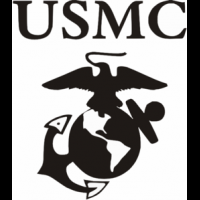


.thumb.jpg.d17ff607fc7e89ed057e63fcb6f2a888.jpg)
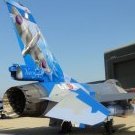


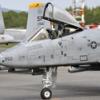
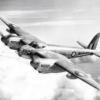
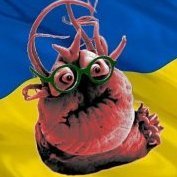
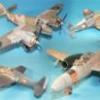
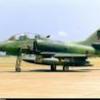
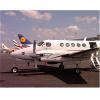

.thumb.jpg.158e2e086d45b8f96b7d93b8bee8dc21.jpg)

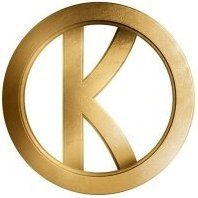




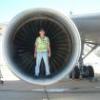

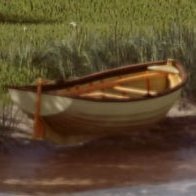

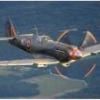
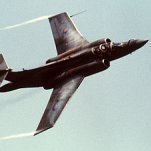
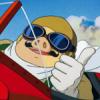
Wedge-TailedEaglePortraitRaptorDomains.thumb.jpg.41a306d3445a68f0f2df773e01776ea6.jpg)
